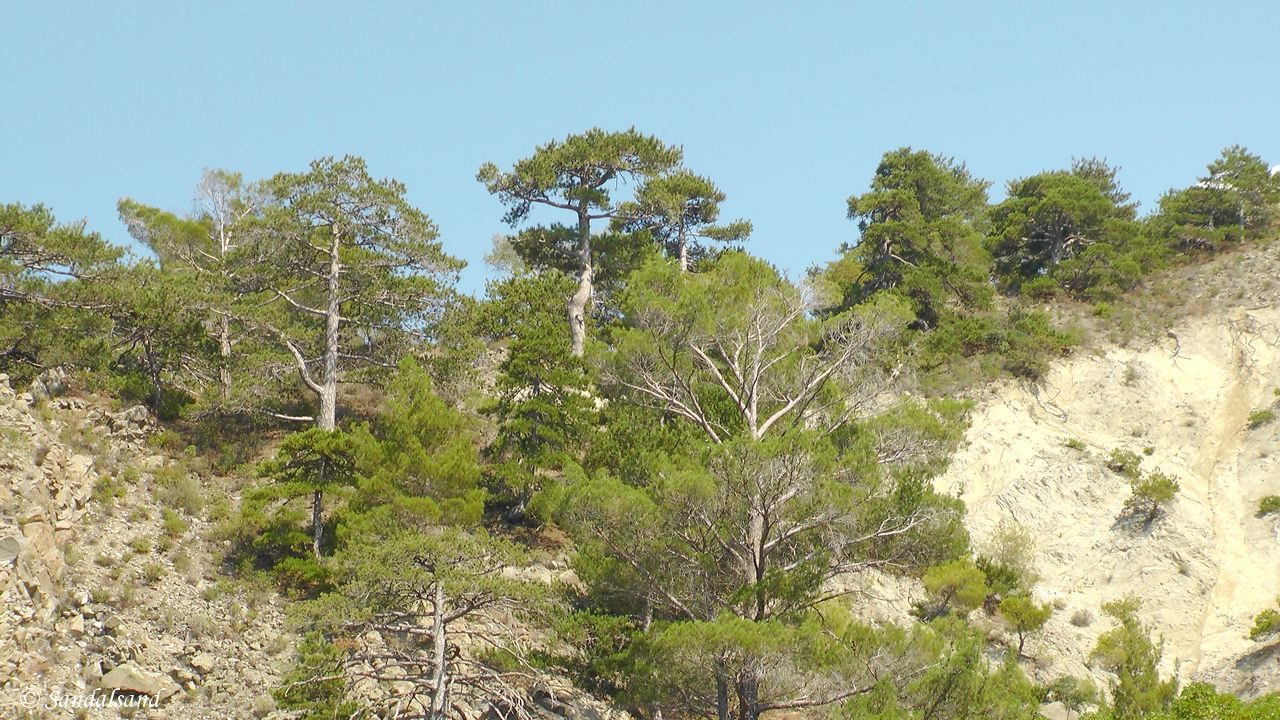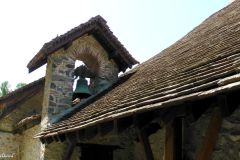The Troodos mountains offer a fine alternative or addition to your ordinary beach vacation in Cyprus. We were hunting nice scenery, traditional villages and the ten painted churches on UNESCO’s World Heritage List.
Planning our visit we had picked five of the churches which were, on the whole, not far from each other. They had all been particularly recommended on various websites. In the beautiful afternoon light we ended up with a sixth, a true wonder. The very small painted churches of the Troodos are UNESCO World Heritage Sites, they date back as far as the 11th century and has been largely preserved thanks to their remote location. (Read my special entry about them.)
Even if you are not particularly interested in old churches, you will love these ones. Besides, they make up good stops in addition to the villages and mountain views. In the Troodos you will find the kind of Cyprus you would imagine it was like before the tourists arrived.
This is the second of four articles from Cyprus. It was a family trip to Ayia Napa on the eastern coast, with day trips into the Troodos mountains in the middle, and across the Green Line to the Turkish side in the north.
Getting around
If you have come to Cyprus on a charter flight, chances are your company will offer excursions into the Troodos. My company had a jeep safari to a waterfall and to a village. Another daytrip included wine tasting. Other companies offer visits to the monasteries, either the Ioannis Lampadistis Monastery or the Kykkos Monastery.
Many would choose to rent a car, just remember they still drive on the left here. In this case you’ll need a good road map. They say you can pick one up at the nearest Cyprus Tourism Organisation office.
We decided to rent a minibus with a driver through a local agency and paid 250-300 euros for the day. He spoke little English, like drivers usually do, but an accompanying guide would have cost us 150 EUR more. On the other hand he was very helpful, he was local and spoke the language.
We left Ayia Napa in the morning and returned some ten hours later. A long day – but worth it.
This is important
Finding the very small churches may be tricky. Consult the map below for the accurate location of them. Not all internet sources are reliable when it comes to maps, this one is. Only some of the churches are accessible with a large coach; in some cases even our minibus had problems mastering the sharp turns.
Getting into the churches is even trickier. They are often locked and the key holder is not always at hand. Our driver was helpful with this. Consult the information on this website, where slightly conflicting information from different sources are being highlighted.
Beware that websites in English may have different spellings of the Greek language names of villages and churches. This should however not pose much of a problem.
In the map below the green World Heritage Site icons indicate the churches we visited, photographed and described on this page. The similar icons in blue are presented with a photo but no text. We never made it to them. Click to see images and names, and expand the map into a new tab for an even better view.
The churches
I will in the following not offer too much details about the churches we visited, only enough to let you get a feeling of what there is to see. Read up on all ten churches on this website, on Wikipedia, and in particular on the Cyprus Department of Antiquities. Read UNESCO’s own description.
Sequence of our visit
The first three
Monastery of Agios Ioannis (St John) Lampadistis. This little monastery is situated below the village of Kalopanagiotis. There is a road leading down to the monastery but we parked in the village and walked the steep steps down and across the river. There is a new funicular being opened in 2014 making the access much more comfortable. The monastery has several buildings and the 11th century church is larger than many of the other painted churches. Don’t miss the paintings (icons) inside one of the other buildings.
Church of Panagia (Our Lady) tou Moutoulla, in the village of Moutoullas is not to be confused with the newer church closer to the centre. The heritage church is situated higher up on the hillside and has a fabulous view. Unfortunately it was locked when we arrived. Have a look at the little cemetery next to it.
Church of Archangelos Michail, in the village of Pedoulas is found by driving right into the centre and then walk for a hundred metres or so. It was open when we arrived. This church is very little, there is only room for a single row of chairs on each side of the aisle. There is a little Byzantine museum across the road (closed on our visit).
Lunch and then three more
We had a great lunch at the Platanos Louis restaurant in the centre, as did many locals – rustic and a wonderful atmosphere beneath the high trees.
Church of Agios Nikolaos tis Stegis is located near the village of Kakopetria. This church looks larger than it is thanks to its double roof feature visible on the image below.
Church of Panagia (Our Lady) tis Podithou, near the village of Galata was our fifth planned visit this day. We found it locked but thanks to our driver’s phone call, the key holder came rushing and let us in. This is the most recent of the old Byzantine churches. The Byzantine style of painting churches on Cyprus since the 11th century had at this stage (17th century) become very influenced by Renaissance art. The church’s mural paintings were never finished.
There is another church closer to the road which is painted all over, but is not among the chosen 10. To the untrained eye it looks very nice though.
Church of Panagia (Our Lady) tis Asinou, is situated further from the others near the village of Nikitari. This sixth church this day is located several kilometres up a dead-end road and we had become tired by now. Our driver insisted however that we should pay it a visit, and we did not regret. It was beautiful inside and with the setting sun shining sideways upon it, also from the outside.
Not visited, but shown on map
Panagia (Our Lady) tou Arakos, village of Lagoudera
Transfiguration of the Saviour, village of Palaichori
Timios Stavros (Holy Cross), village of Pelendri
Timios Stavros (Holy Cross) tou Agiasmati, village of Platanistasa
What else to see in the Troodos
The Troodos is a mountainous area roughly in the middle of Cyprus, rising to 1,952 metres above the sea. The highest peak is called Olympus. In wintertime there are occasional snowfalls making it possible for the ski resort on Mount Olympus to open its slopes.
We did not manage to see all of the Troodos in one day, but judging from what we saw the landscape is varied consisting of high peaks and deep valleys in between. Here and there we found little towns, sometimes no larger than hamlets clinging to the steep mountainsides. There seemed to be little farming activity, and very few animals could be seen.
Pine trees of different kinds is the dominating vegetation feature.
The roads are generally narrow, sometimes with hairpin curves making access for large buses/coaches less likely. This means that there are many places you will not find large groups of tourists coming in from the seaside resorts.
Besides, the sun and booze seekers are not likely to come up here anyway. You will meet Cypriots from the big cities (Nicosia) in the August holiday season, and you will meet the culturally interested tourists in a rented car. These mountains are also popular among hikers, and there are a number of marked paths to follow.
The villages are picturesque and tranquil. We had a look at some of the villages with painted churches, like Kalopanagiotis, Pedoulas, and Galata. The latter was very beautiful with quaint, old wooden houses up a long, narrow street. There were plenty of restaurants, cafes and small places to stay – obviously a popular holiday destination for foreigners and Cypriots alike.
Read more
Read the article in my World Heritage series about the Troodos churches. This article from the Troodos is number two of four from Cyprus. All articles:
(1) The easy life on the beaches of Ayia Napa
(2) A day-trip into the Troodos mountains
(3) Famagusta and Salamis in Northern Cyprus

























